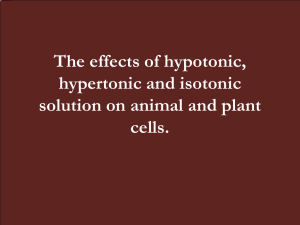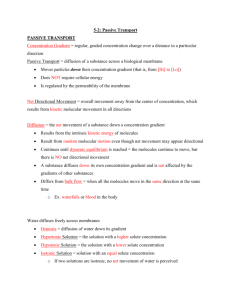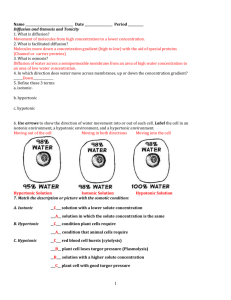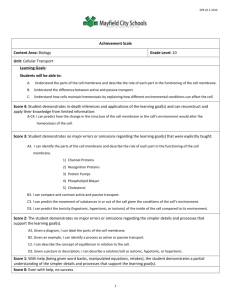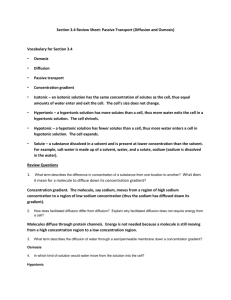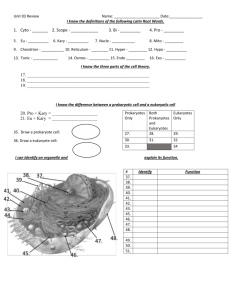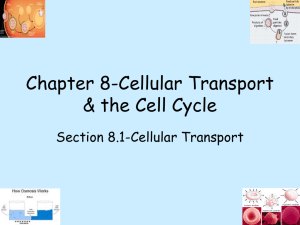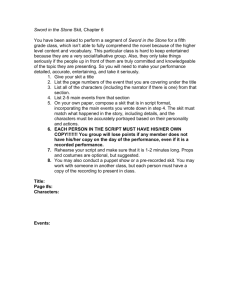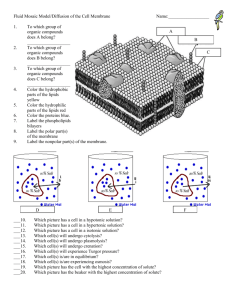Do This Now - marcusjohnson
advertisement
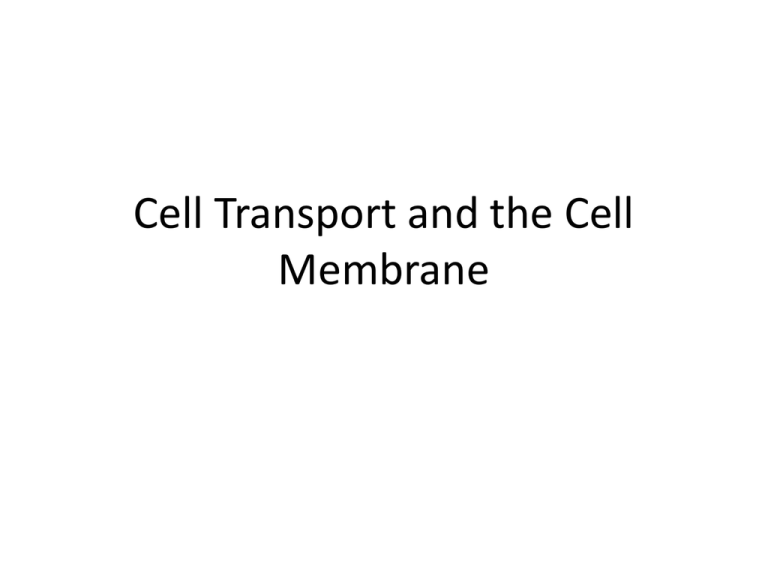
Cell Transport and the Cell Membrane Long term energy storage and insulation Hormones, movement, immune system and enzymes Quick energy and energy storage Stores information Protein Lipid Monoglyceride mino cid rotein onosaccharide olysaccharide ucleotide Carbohydrate ucleic Nucleic Acid acid Create Frayer Models for each of the following terms: 1. Hypotonic Solution 2. Hypertonic Solution 3. Isotonic Solution Definition Picture In your own words Sentence Hypotonic Solution • A solution or environment surrounding a cell that has less dissolved solutes and more water than the cell • This type of solution will cause water to move into the cell via osmosis, resulting in swelling of the cell Hypertonic Solution • A solution or environment surrounding a cell that has more dissolved solutes and less water than the cell • This type of solution will cause water to move out of the cell via osmosis, resulting in shrinking of the cell. Isotonic • A solution or environment surrounding a cell that has the same amount of dissolved solutes and the same amount of water as the cell Explore the Cell Membrane Log on to Edmodo and complete the “Osmosis is Serious Business Assignment” iq3p7e 1. Read the articles and answer the questions related to the article on a separate sheet of paper. Questions 1. What sort of environment (hypotonic, hypertonic, isotonic) did the extra fertilizer create around the roots of the corn? 2. Keeping in mind your answer to the previous question, what do you believe caused the corn plants to wilt and eventually die? 3. If Michael’s mistake had been caught earlier, is there anything that could have been done to prevent the corn from dying? 4. Generally, people water their plants with 100% H2O—no solutes added. What sort of environment does this create around the roots of the plant? 5. Briefly explain why plants generally thrive in this sort of environment. Questions 1. What problem did the distilled water in the patient’s bloodstream create? 2. What happed to the patient’s blood cells as a result? 3. Considering the function of red blood cells, why did the patient’s oxygen levels fall? 4. After Tom made his error, is there anything that could have been done to save the patient’s life? Membrane Transport skit Objective: Create a skit that describes types of membrane transport and how it help cells maintain homeostasis. 1. Use a cell membrane model or graphic to explain the following: a. Diffusion b. Osmosis c. At least one example of active transport (protein pump, endocytosis, exocytosis) 2. For each of the transport methods above, give a specific example of how this helps cells maintain homeostasis. 3. Each group member must participate in the creation of the skit and appear in the skit. 4. You must turn in a copy of your skit to me before presenting it to the class.

